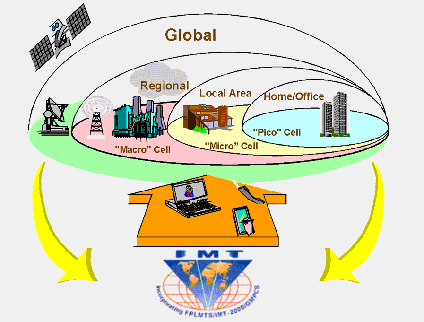|
Telecom ABC - I
International Mobile Telecommunications for the year 2000 (IMT-2000) is a worldwide set of requirements for a family of standards for the 3rd generation of mobile communications. The IMT-2000 "umbrella specifications" are developed by the International Telecommunicatons Union (ITU). Originally it was the intention to have only one truly global standard but that turned out to be impossible. IMT-2000 should provide worldwide mobile broadband multimedia services via a single global frequency band. The frequency range should be around 2000 MHz. 
In the umbrella specification a number of characteristics are defined which the underying technologies should meet. The main characteristics are:
Family members
Originally, the IMT family consisted of five familiy members. The sixth family member (mobile WiMAX) was added later, in october 2007.
Frequency bands
In Europe is the TDD band from 1885-1900 MHz not available for licenses use of IMT-2000, this is used by cordless telephony (DECT). In addition to this core-band the frequency band 2500 to 2690 MHz was identified in 2000, of which the edges, ranging from 2500-2520 and 2670-2690 MHz, are at first identified for satellite communications. Existing second generation bands (including GSM bands) 806 to 960 MHz, 1429 to 1501 MHz and 1710 to 1885 MHz are also identified for IMT-2000 in the long term.
Copyright © 2005 Telecom ABC. All Rights Reserved.
Template inspired by ronsguide.com |
|||||||
|
See also
External links
Sponsors
|
|||||||